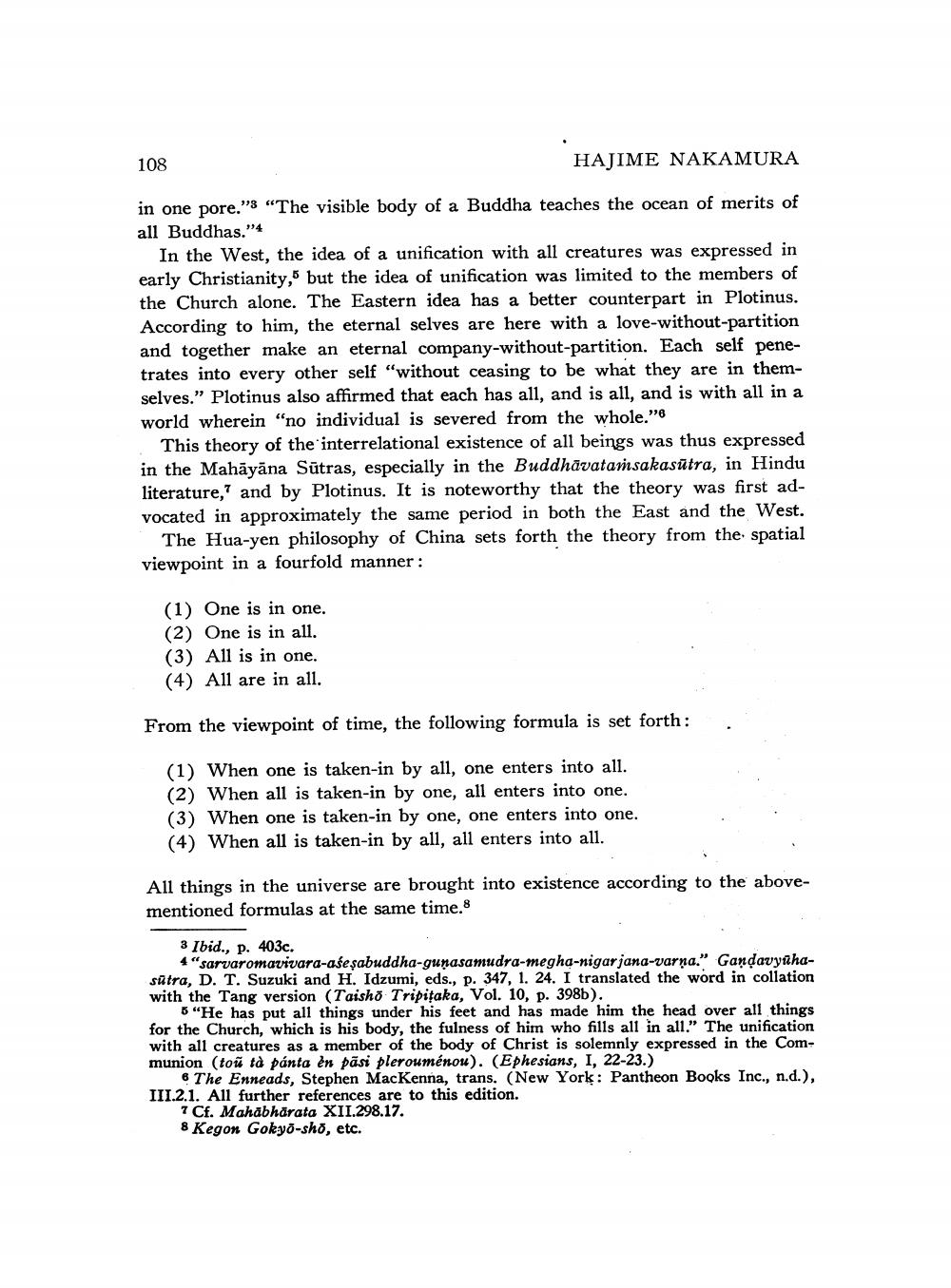________________
108
HAJIME NAKAMURA
in one pore." "The visible body of a Buddha teaches the ocean of merits of all Buddhas."4
In the West, the idea of a unification with all creatures was expressed in early Christianity, but the idea of unification was limited to the members of the Church alone. The Eastern idea has a better counterpart in Plotinus. According to him, the eternal selves are here with a love-without-partition and together make an eternal company-without-partition. Each self penetrates into every other self "without ceasing to be what they are in themselves." Plotinus also affirmed that each has all, and is all, and is with all in a world wherein "no individual is severed from the whole."
This theory of the interrelational existence of all beings was thus expressed in the Mahāyāna Sūtras, especially in the Buddhāvatarsakasūtra, in Hindu literature, and by Plotinus. It is noteworthy that the theory was first advocated in approximately the same period in both the East and the West.
The Hua-yen philosophy of China sets forth the theory from the spatial viewpoint in a fourfold manner :
(1) One is in one. (2) One is in all. (3) All is in one. (4) All are in all.
From the viewpoint of time, the following formula is set forth:
.
(1) When one is taken-in by all, one enters into all. (2) When all is taken-in by one, all enters into one. (3) When one is taken-in by one, one enters into one. (4) When all is taken-in by all, all enters into all.
All things in the universe are brought into existence according to the abovementioned formulas at the same time.8
3 Ibid., p. 403c.
4 "sarvaromavivara-aśeşabuddha-gunasamudra-megha-nigarjana-varna." Gandavyahasatra, D. T. Suzuki and H. Idzumi, eds., p. 347, 1. 24. I translated the word in collation with the Tang version (Taisho Tripitaka, Vol. 10, p. 398b).
5 "He has put all things under his feet and has made him the head over all things for the Church, which is his body, the fulness of him who fills all in all." The unification with all creatures as a member of the body of Christ is solemnly expressed in the Communion (toi td pánta én päsi plerouménou). (Ephesians, I, 22-23.)
6 The Enneads, Stephen MacKenna, trans. (New York: Pantheon Books Inc., n.d.), III.2.1. All further references are to this edition.
7 Cf. Mahabharata XII.298.17. 8 Kegon Gokyo-sho, etc.




